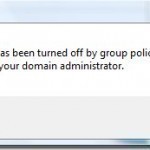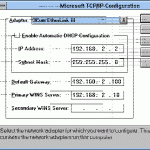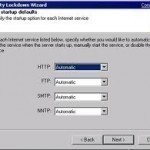One of the better functions of Microsoft Word is the ability to change the layout of the page so that you can create different sized documents. Making index cards in Microsoft Word is very easy and, if your printer is good, they will print and read very good. It is important, though, to get blank index cards because getting the words to match up with the lines on the index cards is nearly impossible and will result in a waste of cards. Determine the size of the index cards you'll Read More
Group Policy Has Turned off System Restore

System Restore is a Windows Operating System mechanism that allows users to effectively reverse any settings or actions performed since the last Restore Point. A Restore Point is a specific date that the user saved his/her current settings on and restores the computer to the settings of that time. Restore Points are also automatically created whenever the user performs an installation or an action that affects the Windows Registry or other settings. Users can access System Restore by opening the Start Menu, clicking All Programs, clicking Accessories, clicking System Tools, Read More
Troubleshooting Windows Explorer Crashes
Windows Explorer is the Microsoft file management program that has been bundled with all releases of the Windows Operating System (OS) since Windows 95. Explorer provides the user interface or GUI for the end-user to access the computer's files system. The Windows OS can run without Windows Explorer being loaded, however, most Windows users have come to rely on using the helper application for day-to-day use of the computer. A common problem that arises for Windows users, is that after installation of third-party applications, the Windows Explorer application will crash. Read More
How to Find the Windows Version on a PC

In many situations, it is extremely important to know the Windows software version that one’s computer is running. While it is obvious whether a computer user is running Windows 98 compared to Windows XP from the welcome screen, knowing the version and other information about the operating system can help a user avoid problems loading software that is compatible with the current version installed. For instance, with Windows XP, Microsoft has produced several versions – each sometimes requiring a specific driver for hardware and software devices. In order to ensure Read More
Troubleshooting Group Policy
Through Group Policy, a wide variety of user and computer configuration settings can be applied to users and computers in Active Directory. If an Active Directory environment includes a hierarchy with many different organizational unit (OU) levels, when group policies are applied at these different levels within the hierarchy, it is almost certain that Group Policy behavior and settings will have to be troubleshooted. There are going to be situations when Group Policy settings produce an expected result. Group Policy settings are contained in Group Policy Objects (GPOs), which are Read More
Windows Taskbar
For Window's users, the taskbar is a highly efficient way for the computer user to not only navigate from application to application, but receive informative information on the type of programs that are running and any special notifications that a user should be aware of. The Default Configuration of the Window's Taskbar The default location of the taskbar is at the bottom of the screen- it runs fully horizontally from left to right. The Start button is located at the right, then comes the quick launch bar, taskbar buttons and Read More
Installing and Configuring TCP/IP

Installing TCP/IP TCP/IP is installed automatically when the Windows Server 2003 setup process runs. It is not usually necessary to install TCP/IP after the Windows Server 2003 setup process completed. The instances when you might need to manually install TCP/IP are listed below: TCP/IP was disabled when the Windows Server 2003 setup process executed. TCP/IP was uninstalled from the computer. How to install the TCP/IP protocol suite Click Start, Control Panel, and then click Network Connections In the Network Connections window, right-click the network connection for which you want to Read More
How to Change the Color of the Start Button
The Start menu and Start button form part of the Microsoft Windows operating system's user interface. Users can access different applications and Windows utilities installed on the computer with the aid of the Start menu. The Start button serves as a point of origin for users to access the applications and programs. It also helps users find files, access system files, folders such as "My Documents" and even access browser bookmarks. The Start menu offers a quick yet cohesive method of application access as all programs, applications, and files are Read More
Error 1721
This is an error commonly witnessed when you try to uninstall a program using the "Add or Remove Programs" in Microsoft Windows XP. The message itself will read: "Error 1721. There is a problem with this Windows Installer package. A program required for this install to complete could not be run. Contact your support personal or package vendor." Resolution #1: Reregistering the Windows Installer service It is known that if the Microsoft installation engine malfunctions or is internally corrupted, there is a possibly that you will not be able to Read More
Configuring and Managing SMTP Transport

Understanding SMTP Connections and Commands The process that occurs to establish a connection between a SMTP client and SMTP server is illustrated below: The SMTP client initiates a TCP connection to SMTP server. The SMTP server replies with a ready response – 220 response. The SMTP client sends a helo command to indicate that a SMTP session is to be started. The server returns a response 250. This signifies that the request has been completed. The SMTP client uses the mail from: command to identify the sender of the message. Read More


Share on: